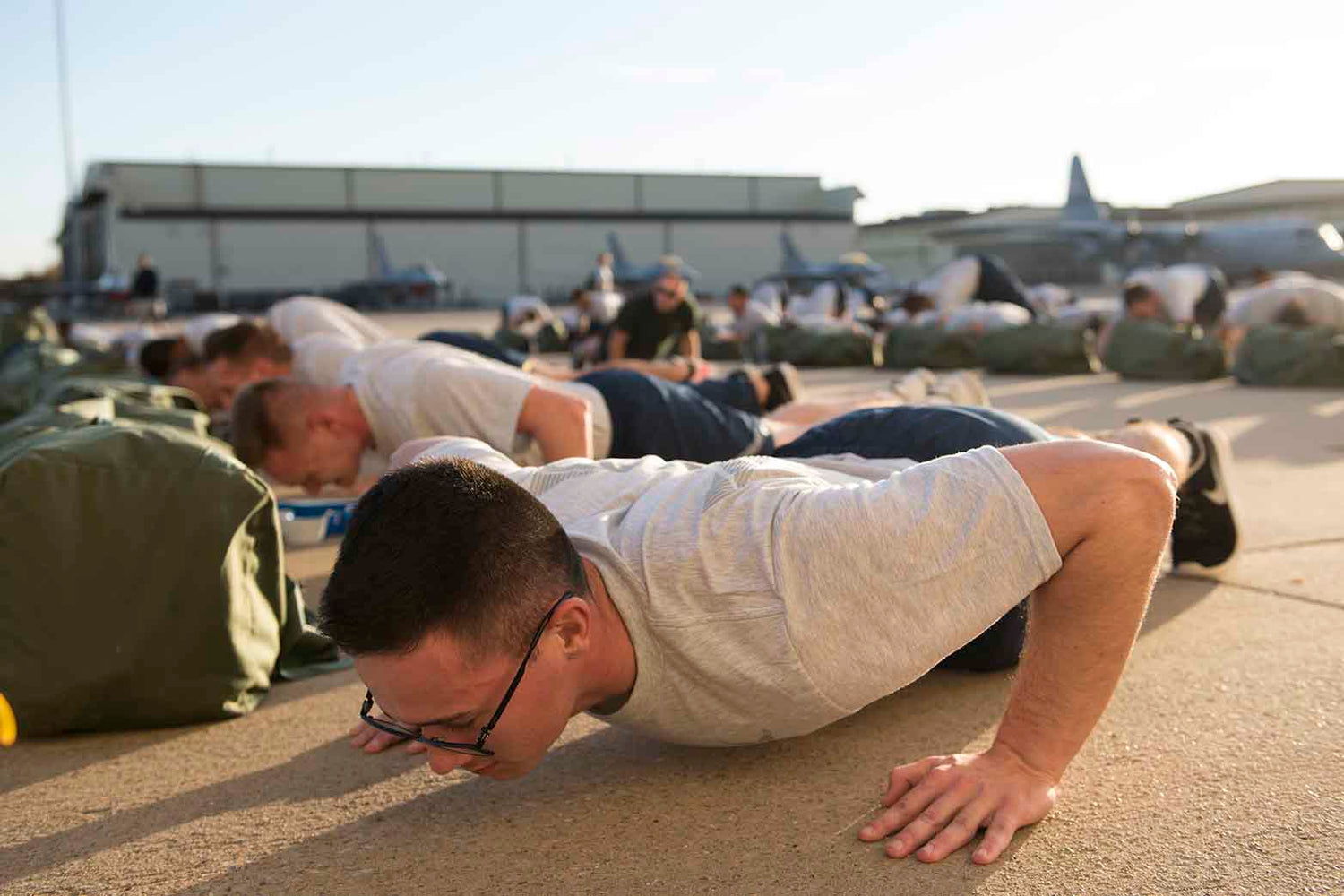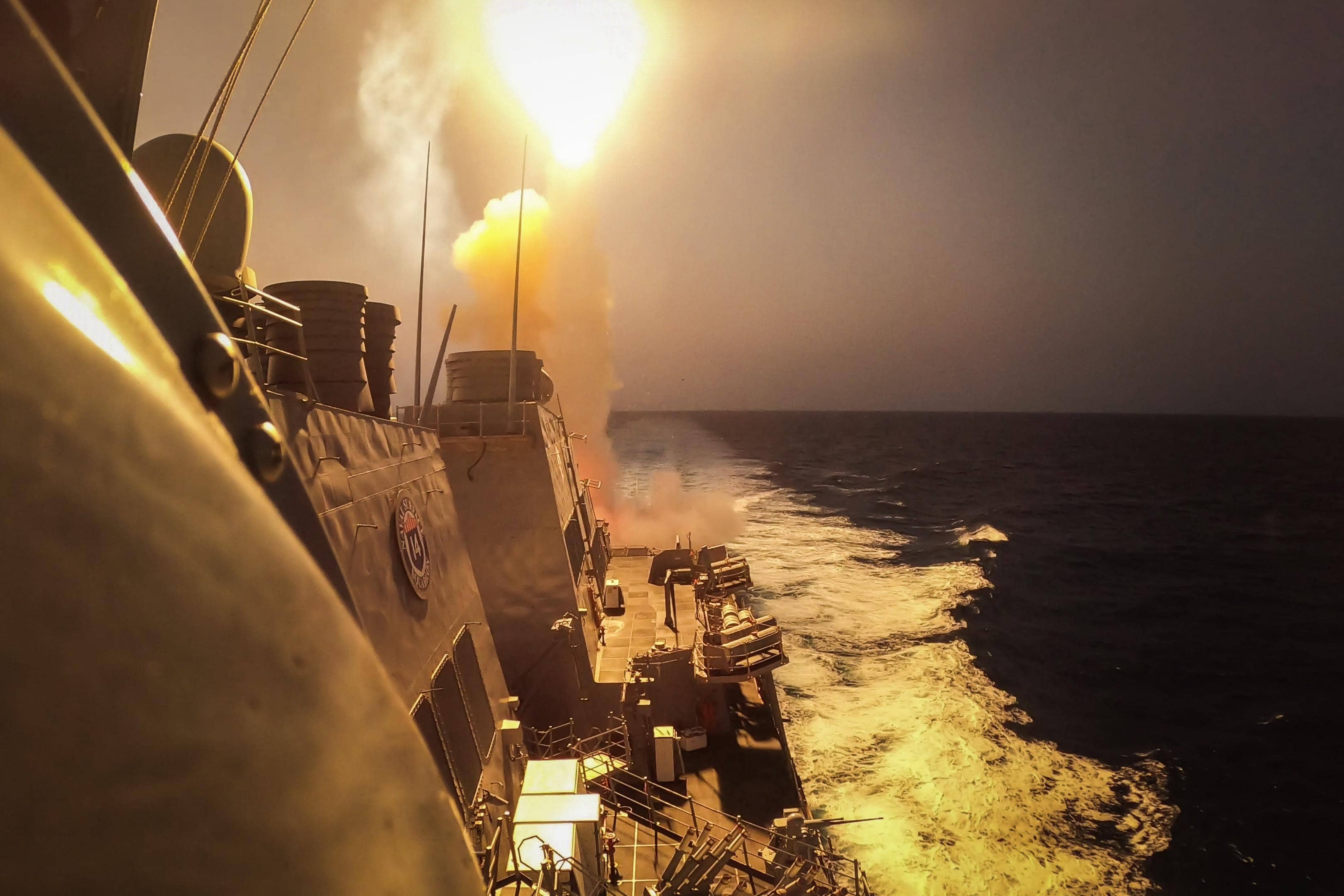Airman Kyle Nemeth, 363rd Training Squadron student, and other Airmen in Training (AIT) do push-ups during a physical training (PT) session at Sheppard Air Force Base, Texas, Nov. 30. 363rd TRS students perform PT three days per week to ensure they are physically fit to carry out the mission at their first duty station. (U.S. Air Force photo by Alan R. Quevy)
As the festive decorations come down and the reality of the new year sets in, many individuals turn their attention towards improving physical fitness—a common resolution post-holiday indulgence. However, for military personnel, this annual trend of focusing on fitness is not just a seasonal whim but a professional imperative. The realm of military fitness, particularly in the Air Force, is marked by a stringent adherence to health and fitness, reflecting its critical importance in this unique profession.
Physical fitness in the military transcends beyond personal health goals, forming a bedrock of military readiness and effectiveness. For service members, achieving and maintaining peak physical condition is not merely encouraged but mandated, with the Department of Defense setting clear guidelines for fitness. These guidelines ensure that every service member is combat-ready at all times, emphasizing the integral role of physical fitness in military life and operations.
This year, the Air Force is reinvigorating its fitness program by reintroducing the Body Composition Assessment (BCA). This assessment, distinct from the regular physical fitness tests, aims to measure abdominal fat distribution, a key indicator of overall health risks. The BCA involves a simple yet effective method: calculating the ratio of an Airman's waist circumference to their height. This reintroduction underscores the Air Force’s commitment to comprehensive health beyond basic fitness metrics.
The Air Force’s current fitness testing regimen exemplifies flexibility and adaptation. Airmen have the option to choose from a variety of exercises to demonstrate their muscular strength, such as one-minute timed pushups or two-minute hand-release pushups. Core endurance can be assessed through several exercises, including sit-ups, cross-leg reverse crunches, or forearm planks. Additionally, for aerobic testing, Airmen can opt between a traditional 1.5-mile run or a high-intensity 20-meter shuttle run. This flexibility not only accommodates different physical strengths but also encourages a more personalized approach to fitness.
Master Sergeant Benjamin Blackford, serving at the 185th Air Refueling Wing, brings valuable insights from his dual role in finance and as a Physical Training Leader. Blackford highlights that consistent, healthy lifestyle choices are key to excelling in fitness assessments. He notes the positive impact of the Air Force’s diversified fitness options, stating that these have opened more avenues for Airmen to achieve success in their physical assessments.
Supporting Airmen in their fitness journey, the Department of Defense has developed the Human Performance Resources by the Consortium for Health and Military Performance (HPRC) website. This comprehensive resource offers a wealth of information, including videos, articles, and practical tips, to assist service members in achieving and maintaining optimal physical fitness. The HPRC serves as a testament to the military's investment in the holistic well-being of its personnel.
The reintroduction of the BCA, along with the flexible fitness testing options, signals a progressive approach towards physical readiness in the Air Force. These initiatives are likely to have a long-term positive impact on the health and operational readiness of Airmen. Moving forward, the Air Force's commitment to fostering a culture of comprehensive health and fitness is poised to enhance the overall effectiveness and well-being of its service members.
The Air Force’s renewed focus on fitness in the new year is a reflection of its commitment to the holistic health and operational readiness of its Airmen. By reintroducing the Body Composition Assessment and offering flexible fitness testing options, the Air Force is setting a new standard in military fitness, one that recognizes the diverse capabilities and needs of its personnel. This forward-looking approach exemplifies the Air Force’s dedication to the well-being and preparedness of its service members, now and into the future.





Leave a comment
This site is protected by hCaptcha and the hCaptcha Privacy Policy and Terms of Service apply.